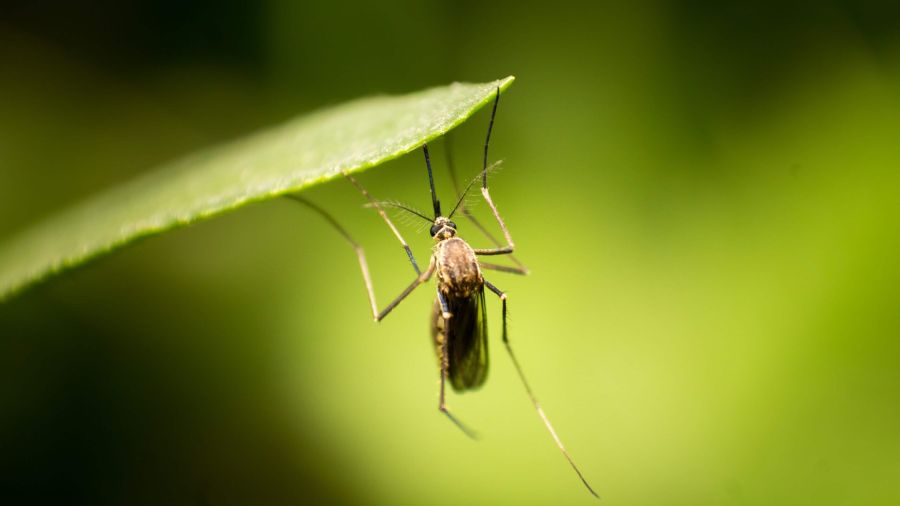Publication | Anopheles maculipennis Complex in The Netherlands: First Record of Anopheles daciae (Diptera: Culicidae)

This publication is part of the project ‘Preparing for vector-borne virus outbreaks in a changing world: a One Health Approach’ (NWA.1160.1S.210) which is (partly) financed by the Dutch Research Council (NWO).

Authors: A. Ibáñez-Justicia, Nathalie Smitz, Rody Blom, Ann Vanderheyden, Frans Jacobs, Kenny Meganck, Sophie Gombeer, Thierry Backeljau, Constantianus J. M. Koenraadt, J. S. Griep, Marc De Meyer, Arjan Stroo
Abstract
Despite their past importance as vectors of indigenous malaria, the species composition and spatial distribution of the members of the Anopheles maculipennis complex have been studied to a limited extent in the Netherlands. Therefore, this investigation focuses on the distribution of the members of this complex in the Netherlands, including Anopheles daciae, which has recently been found in countries bordering the Netherlands. In the framework of a national mosquito surveillance between 2010 and 2021, a total of 541 specimens of An. maculipennis s.l. were analyzed from 161 locations covering the entire territory. In addition, 89 specimens were analyzed from overwintering sites during the winter of 2020/2021. All individual mosquitoes were identified to species-level using Sanger sequencing of the ribosomal internal transcribed spacer 2. To characterize the habitat of An. maculipennis s.l. in the Netherlands, land cover use data was extracted in a 1 km buffer area around each finding location. For populations collected in summers between 2010 and 2021, the most frequent species was An. messeae, present in 88.19% of the locations, followed by An. maculipennis s.s. (11.80%), An. atroparvus (3.72%) and An. daciae (3.72%). Anopheles daciae was found in the southern inland areas of the country. Furthermore, An. messeae and An. daciae occurred in sympatry at overwintering sites. This study provides relevant information on the occurrence of species of the Anopheles maculipennis complex in the Netherlands, contributing to a better estimation of the risk of mosquito-borne disease in the country.
1. Introduction
In the Netherlands, the last published checklist of mosquitoes (Diptera: Culicidae) included 35 indigenous species [1]. This list is not static and was recently updated with a new indigenous species, Culiseta longiareolata [2]. Four members of the Anopheles maculipennis complex (= s.l.) are reported as present in the published checklist [1], some of which are capable of carrying pathogens of medical importance, including malaria: Anopheles atroparvus van Thiel, 1927, An. messeae Falleroni, 1926, An. maculipennis sensu stricto Meigen, 1818, and An. melanoon Hackett, 1934. However, this latter species is not considered to occur in the Netherlands by [3], and An. maculipennis s.s. is considered uncommon in the country [4]. Anopheles atroparvus is reported as the only malaria vector (Plasmodium vivax and Plasmodium malariae) in the coastal areas of the Netherlands. Experimentally, An. atroparvus can also be an effective host and capable of transmitting Plasmodium ovale to humans [5]. A comparison of the anopheline species composition between 1935 and 1999 showed a prevalence shift from An. atroparvus to An. messeae in the Delta of the Rivers Rhine and Meuse, coinciding with the disappearance of indigenous malaria [6]. In a study of overwintering mosquitoes in several farms in the Netherlands, An. messeae individuals were more frequently found and An. atroparvus was less common [4]. A decline of An. atroparvus over the 20th century was recorded in multiple European countries and was assumed to be linked to major ecological changes, such as drainage practices, surface water pollution, loss of suitable resting sites for hibernation, etc. [6,7,8].
Despite their past importance as vectors of indigenous malaria and their potential role in the transmission of imported tropical malaria, leading to the reappearance of autochthonous malaria cases in Europe [9], the species composition and spatial distribution of the members of An. maculipennis s.l. in the Netherlands has been poorly studied. Individuals of An. maculipennis s.l. were found at 144 sampling sites during a nationwide inventory of indigenous mosquitoes, involving natural, rural and urban habitats [10]. However, this nationwide inventory did not include DNA-based species identifications to distinguish the members of the complex. Yet, the nuclear ribosomal internal transcribed spacer 2 (ITS2) flanked by portions of the conserved 5.8S and 28S rDNA is useful in this respect [11,12,13]. Since the members of the An. maculipennis complex are difficult to discriminate by morphological characteristics, their identification needs to be verified by ITS2 sequencing.
Anopheles daciae Linton, Nicolescu & Harbach, 2004, is a recently described species of the An. maculipennis complex that is distributed throughout continental Europe [14] and has been found over the past years in the countries bordering the Netherlands, including Germany [15,16], the United Kingdom [11], and Belgium [17]. Nevertheless, An. daciae has not yet been reported in the Netherlands. Therefore, the aim of this study was 1) to investigate the distribution of An. maculipennis s.l. members present in the Netherlands by applying ITS2 sequencing and 2) to find evidence of the presence of An. daciae in the Netherlands, where it is expected to occur, given its presence in neighboring countries.
2. Materials and Methods
2.1. Sampling
Mosquito specimens for the study were collected from different surveys. Most of the specimens (n = 531) were collected between the months of May and September using Mosquito Magnet Liberty Plus traps (WoodstreamTM Co., Lititz, PA, USA) using octenol, in the framework of the National Mosquito Survey [10]. This included 145 specimens collected in 2011, 74 in 2012, 146 in 2013, 72 in 2014, 88 in 2015, 3 in 2016, 12 in 2017 and one in 2021. Additional specimens were collected during Exotic Mosquito Surveys [18] using a variety of sampling methods such as BG-Sentinel traps (n = 4) or BG-Mosquitaire traps (n = 5) (Biogents AG, Regensburg, Germany) both using BG-Sweetscent, and larval sampling using aquarium nets (n = 1). In total, 541 specimens (540 adults and 1 larva) of An. maculipennis s.l. were collected at 161 locations covering the entire territory of the Netherlands.
In addition to these 541 specimens, a total of 89 An. maculipennis s.l. specimens were collected in February (n = 65) and March (n = 24) 2021 from six bunkers of the New Dutch Waterline, located in the municipality of West-Betuwe, the Netherlands. These bunkers are well-known overwintering sites for several mosquito species [19].
All specimens were transported to the laboratory and were morphologically identified to the Anopheles maculipennis complex level using the key of Becker et al. [20]. After identification, specimens were placed in sterile vials and kept frozen at –20 °C until further processing.
2.2. DNA-Based Species Identification
Individual DNA was extracted from a leg or a part of abdomen using the NucleoSpin® Tissue DNA extraction kit (Macherey-Nagel, Düren, Germany), following the manufacturer’s protocols, with an elution volume of 70 µL. For the mosquitoes collected from overwintering sites in February and March 2021, DNA was extracted following the ammoniumhydroxide-protocol as described by [21]. The ITS2 fragment was amplified using the primers of [16], with thermal cycling conditions, PCR reactions and purification for sequencing following [17], except for the mosquitoes collected in overwintering sites in February and March 2021. For these latter, ITS2 fragment were amplified using MyTaq® HS Red mix (Bioline, UK) using the primers as described in [16] and the following thermal cycling conditions: 1 min at 95 °C, followed by 35 cycles of 95 °C for 15 s, 53 °C for 15 s, and 72 °C for 10 s. Forward and reverse strands were assembled and corrected with Geneious® Prime v.2019.2.3 (Biomatters Ltd., Auckland, New Zealand), after which consensus sequences were generated and trimmed to remove the primers and low-quality ends.
ITS2 consensus sequences were used as queries to search for most similar sequences in GenBank (NCBI, National Centre for Biotechnology), using the Basic Local Alignment Search Tool (https://blast.ncbi.nlm.nih.gov/Blast.cgi, accessed on 15 June 2022). To discriminate between An. daciae and An. messeae, aligned consensus sequences were visually checked for the presence of the five species-specific diagnostic sites [12]. Species-assigned consensus sequences were then aligned together with sequences of all other Anopheles species occurring in the Netherlands, namely An. algeriensis Theobald, 1903, An. claviger (Meigen, 1804), An. plumbeus Stephens, 1828 [22], and with outgroup sequences (namely An. funestus sensu stricto Giles, 1900, and An. minimus Theobald, 1901), using ClustalW in Geneious® Prime v.2019.2.3. We also included ITS2 sequences of An. melanoon Hackett, 1934, which is part of An. maculipennis s.l. and was reported to occur in the Netherlands in the past [22] but was not identified in previous reports [3]. Conspecific identical sequences were removed from the database to retain unique ITS2 sequences in the final alignment. Using the web application FindModel (http://hiv.lanl.gov/content/sequence/findmodel/findmodel.html, accessed on 15 June 2022), the Kimura 2-parameter was identified as the best evolution model describing our data [23,24]. A rooted maximum likelihood tree (ML) was constructed using MEGA X v.10.0.5 (Kumar et al., 2018), with branch support assessed by 1000 bootstrap replicates. Average interspecific K2P distances were calculated with the R v.3.6.1 package Spider v3.6.2 [25,26].
2.3. Habitat Characterization
To characterize the habitat of An. maculipennis s.l. in the Netherlands, a 1 km buffer area was created around each finding location (excluding overwintering locations). Using this pre-defined buffer zone in ArcGIS v.10.7.1 [27] and the 2018 version of the raster file of the Corine Land Cover [28], the areas covered by the five main Land Cover Classes were extracted: artificial or urban areas, agricultural areas, forest and seminatural areas, wetlands, and water bodies. The expected number of specimens per Land Cover Class was calculated using the following formula: (total number of specimens per species × percentage Land Cover in the Netherlands)/100. Habitat association per species was verified by comparing observed number of specimens per species per Land Cover Class with expected number of specimens per species per Land Cover Class using a Fisher’s exact test. All statistical analyses were conducted in RStudio v1.4.1717 [25].
Source: MDPI
Date: 10 august 2022